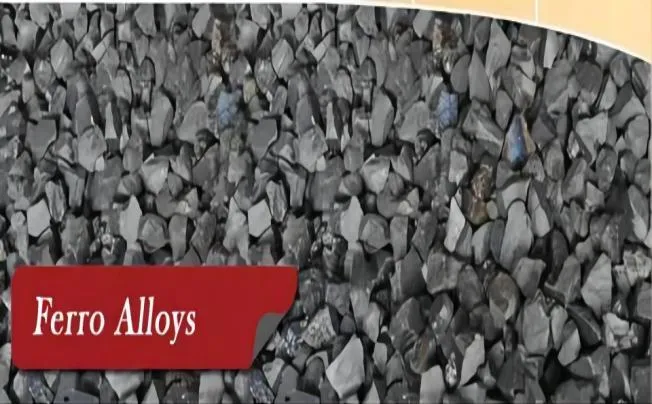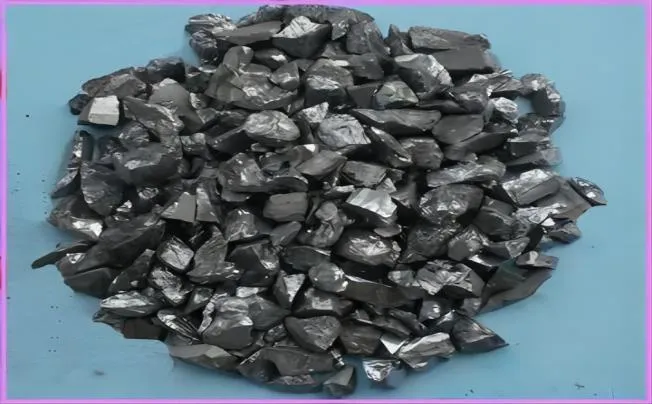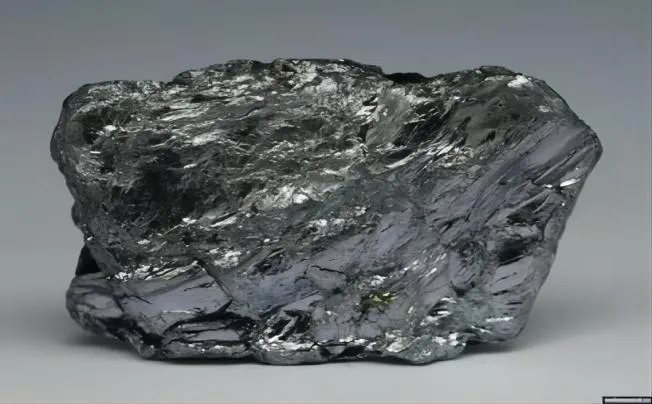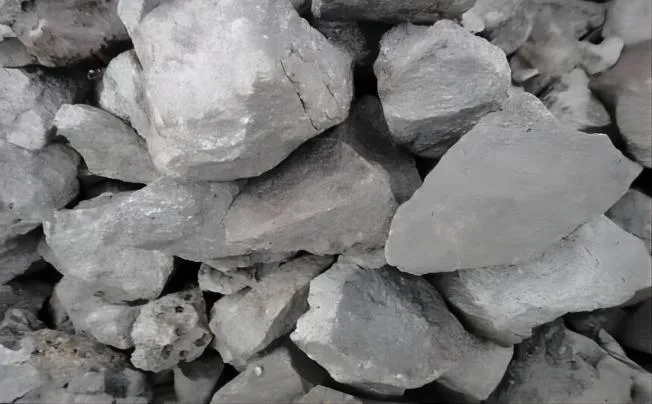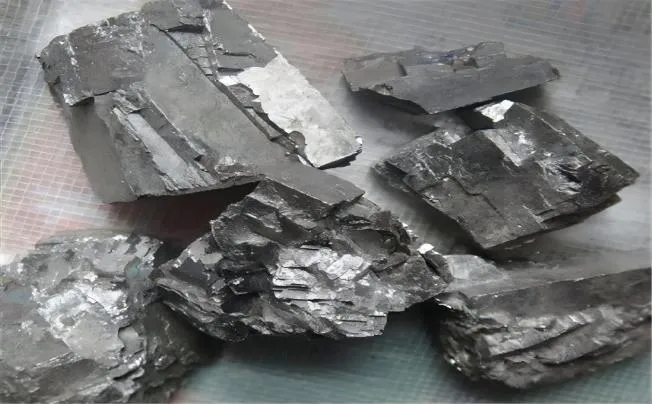What is Ferromolybdenum?
An essential iron-molybdenum metal alloy, ferromolybdenum is mainly used to alloy high-strength low-alloy (HSLA) steel. It has a 60–75% molybdenum concentration. Iron, aluminium, and molybdenum (VI) oxide (MoO3) are heated to create the alloy. Molybdenum is produced in situ when the oxide and aluminium join through an aluminothermic process. Ferromolybdenum can be utilised directly or refined via electron beam melting. Before casting, it is added to molten steel to add molybdenum to the alloy.
The physical properties and applications of ferromolybdenum are as follows: Physical Properties: Appearance: 9 g/cm; Melting Point: 1665–1715 °C; Applications: The most common use of ferromolybdenum is in the production of ferrous alloys, which include military hardware, load-bearing structures, machine tools and equipment, and refinery tubing. Additionally, it is used in the production of stainless steel and other special types of steel that must withstand high temperatures. Finally, ferromolybdenum is frequently added to steel and cast iron to improve their hardenability, strength, and resistance to corrosion.
Manufacturing Process
There are multiple steps in the ferromolybdenum manufacturing process:
Molybdenum (VI) oxide (MoO3) is produced by mining molybdenum.
MoO3 is combined with aluminium and iron oxide.
An aluminothermic process reduces the mixture.
Ferromolybdenum is purified by electron-beam melting.
The finished alloy product is often supplied in bags or steel drums and is created as tiny briquettes or fine powder.
What is Ferromolybdenum 55?
An iron-molybdenum alloy called Ferromolybdenum 55 has a molybdenum concentration of roughly 55%. Aluminium, iron, and molybdenum(VI) oxide (MoO3) are heated to create ferromolybdenum 55. Molybdenum is produced in situ when the oxide and aluminium react together through an aluminothermic process. The resultant alloy can be utilized directly or refined further using techniques such as electron beam melting.
One important source of molybdenum for alloying steel is ferromolybdenum 55. To enhance the characteristics of molten steel, it is added before to casting. Molybdenum gives steel more strength and resistance to corrosion while also improving its capacity to tolerate high temperatures.
How much do you know about No. 55 steel?
- Overview of Steel No. 55
- No. 55 steel has a carbon content of 0.55%. Quenching and tempering are the main effects of heat treatment. No. 55 steel has a high carbon content and a greater hardness (around HRC63) after quenching.
- Steel structural with carbon content Medium carbon steel with a high strength is called 55# steel. After treatment, it has a high surface hardness and strength, but it also has poor toughness and plasticity, medium cutting performance, poor weldability and hardenability, and a tendency to shatter when quenched with water.
- Standards for implementation: Put the GB/T699-1999 standard into practice.
- Chemical makeup
Carbon C: 0.52-2.60
Silicon Si: 0.17~~0.37
Cobalt: 0.50–0.80
Phosporus: ≤0.035 Sulphur P: 0.035
ChromeCr: <0.25
Nickel: ≤0.30
CopperCu: ≤0.25
- Mechanical characteristics
MPa (tensile strength of o b): ≥645(66)
Strength of yield (MPa): ≥380(39)
65 (%) Elongation: ≥13
Area contraction q(%): ≥35
Hardness: ≤255HB, not heat treated
≤217HB annealed steel
Number of samples: The sample measures 25 mm.
- Metallographic structure and heat treatment parameters
Specifications for heat treatment include normalising at 820°C, quenching at 820°C, and tempering at 600°C. Solubite is the metallographic structure.
Status of delivery: Delivery with or without heat treatment (annealing, normalising, or tempering at high temperatures). It should be specified in the contract if the product must be delivered heat-treated. It will be delivered without heat treatment if it is not specified.
Delivered steel hardness: HBS10/3000; unheat-treated steel hardness: 255
Hardness of the delivered steel (HSB10/3000), ≤ annealed steel: 217
- Overview of performance metrics
Along with its great strength, No. 55 steel plate also boasts a number of other all-around excellent qualities, including toughness, fatigue resistance, impact resistance, corrosion resistance, low-temperature impact resistance, ease of processing and welding, and corrosion resistance. The manufacturing sector has praised and acknowledged No. 55 steel plate in unison due to its many excellent qualities.
- Utilising No. 55 steel
The purposes, physical attributes, and technical specifications of shaft components. One of the common parts found in machines is the shaft part. They are mostly employed to support the components of transmissions.
- An explanation of the No. 55 steel plate futures’ fixed size (thickness * width * length / unit mm)
No. 55 steel plate thicknesses (8-400mm) can be made.
No. 55 steel plate width (1700–4000 mm) is possible to make.
A maximum of 55 steel plate lengths (6000-8000 mm) can be fabricated.
Applications of Ferromolybdenum 55
- Steel Production: Ferromolybdenum 55 is a common addition used in the steel-making process. It improves the final metal product’s strength, corrosion resistance, and hardenability. The alloy is used to make load-bearing structures, military gear, machine tools, and refinery tubing.
- High-Strength Low-Alloy (HSLA) Steel: To make HSLA steel, ferromolybdenum 55 is used as an alloying ingredient. Because of its increased mechanical qualities and high strength, HSLA steel is well-suited for structural applications requiring both high strength and low weight.
- Heat-Resistant Steel: Steel becomes more heat-resistant when Ferromolybdenum 55 is added to it. Because of this, it can be used in high-temperature settings for things like heat-resistant components and equipment.
- Production of Stainless Steel: The production of stainless steel involves the use of ferromolybdenum 55. It strengthens, resists corrosion, and withstands heat in stainless steel, which makes it appropriate for a variety of uses, such as chemical processing equipment and appliances.
- Cast Iron: To make cast iron stronger and more resistant to wear, ferromolybdenum 55 is added. It enhances cast iron’s qualities, making it appropriate for uses requiring a high degree of strength and longevity.




